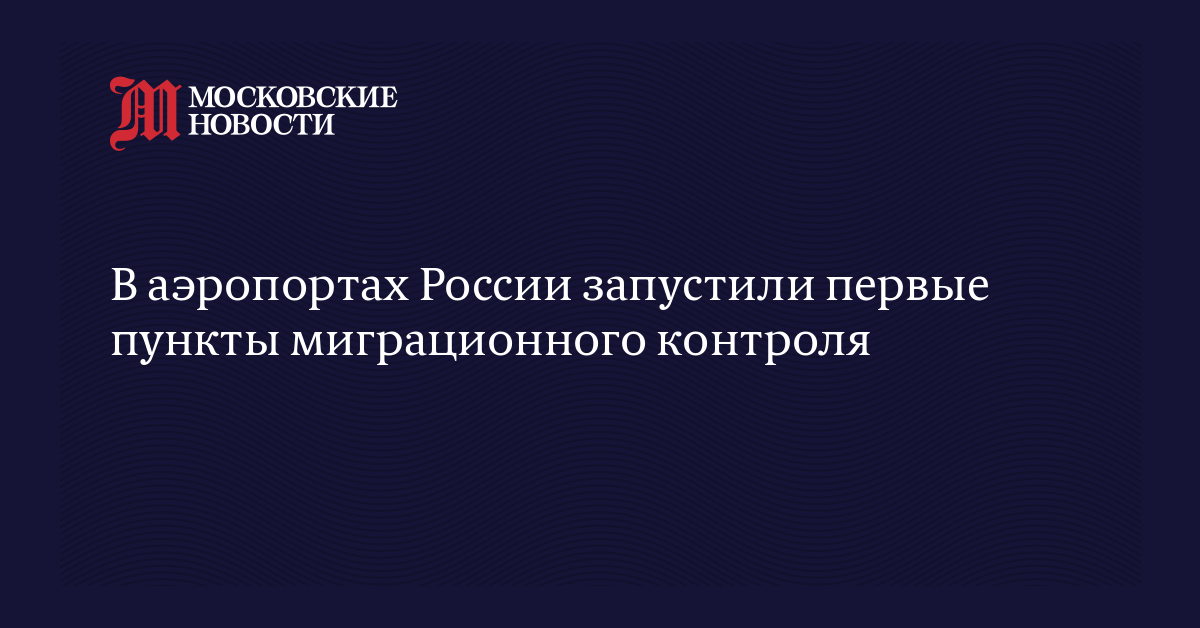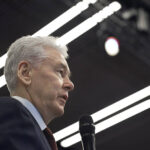The first 12 migration control points have been launched in major Russian airports. The list includes Moscow’s aviation hub, as well as airports in Saint Petersburg, Sochi, Kazan, Novosibirsk, Krasnoyarsk, Yekaterinburg, and several other regions.
- The new checkpoints were created to identify foreigners who violate migration rules. Similar facilities will also appear at border railway stations, as well as near automobile and water crossing points.
- Starting December 1, an experiment is planned in Moscow airports. Biometric control will be introduced for all entering and exiting foreigners. The system will include mandatory facial photography and fingerprinting. Similar procedures are already used in airports of the United States, United Kingdom, Thailand, and UAE.
Moscow’s aviation hub
Moscow’s primary aviation hub is Sheremetyevo International Airport, which opened in 1959 and initially served as the main airport for the Soviet government. It gained global fame as the hub for the national carrier Aeroflot during the Soviet era and has since evolved into a major international gateway, undergoing significant modernization to become one of the busiest airports in Russia.
Saint Petersburg
Saint Petersburg is a historic Russian port city founded in 1703 by Tsar Peter the Great as his “window to the West.” It served as the imperial capital of Russia for over two centuries and is renowned for its grand Baroque and Neoclassical architecture, including the Winter Palace and the Church of the Savior on Spilled Blood. The city’s elegant canals and cultural heritage, including the State Hermitage Museum, reflect its significant role in Russian history, art, and politics.
Sochi
Sochi is a major resort city on the Black Sea coast in southern Russia, often called the “summer capital.” It gained international fame after hosting the 2014 Winter Olympics, which led to significant modern development. Historically, its subtropical climate made it a popular health resort since the Soviet era.
Kazan
Kazan is the capital of the Republic of Tatarstan in Russia and a major cultural and economic hub on the Volga River. Its history dates back over 1,000 years, founded by the Volga Bulgars, and it is renowned for its unique blend of Tatar and Russian cultures. The city’s most iconic landmark is the Kazan Kremlin, a UNESCO World Heritage Site, which houses both the Qolşärif Mosque and the Annunciation Cathedral, symbolizing the peaceful coexistence of Islam and Orthodox Christianity.
Novosibirsk
Novosibirsk is a major city in Siberia, Russia, founded in 1893 as a settlement for the builders of the Trans-Siberian Railway bridge across the Ob River. It rapidly grew into a significant industrial and transportation hub, and today it is known as the unofficial capital of Siberia, home to the renowned Novosibirsk Opera and Ballet Theatre and a major center for science and academia.
Krasnoyarsk
Krasnoyarsk is a major city and cultural center in Siberia, Russia, founded in 1628 as a military fort. It grew into a significant industrial hub during the Soviet era, known for its hydroelectric power station and manufacturing. The city is also famous for its stunning natural surroundings, including the nearby Stolby Nature Reserve and the Yenisei River.
Yekaterinburg
Yekaterinburg is a major city in the Ural Mountains of Russia, founded in 1723 by Tsar Peter the Great as an industrial hub for iron and copper. It is historically significant as the site where the last Russian Tsar, Nicholas II, and his family were executed by the Bolsheviks in 1918. Today, it is a vibrant metropolis known for its cultural institutions and as a gateway between Europe and Asia.
United States
The United States is a North American nation founded in 1776 following its Declaration of Independence from Great Britain. It established a constitutional republic and expanded across the continent to become a global superpower, shaped by waves of immigration and a diverse cultural heritage.






